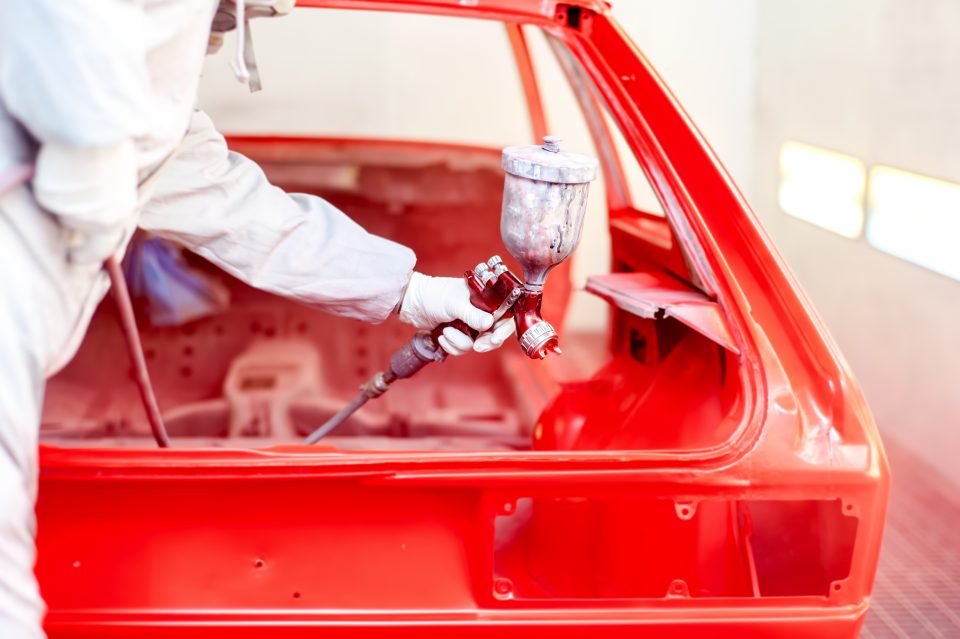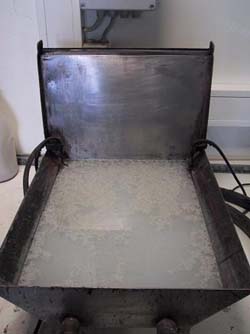Project Description
Paint Coagulation of Liquid Paint

General
Despite the increasing spread of powder paints, wet paint can not be dispensed with in all industrial sectors. In many plants of the metal, the plastics and the wood-processing industry, for qualitative reasons wet paints are still applied by spraying. Hereby not all paint particles meet the parts to be painted, resulting in the so-called overspray. The proportion can be far more than 50% in unfavorable cases (outdated spray technology). How to remove the lacquer spray from the air?
For this purpose the so-called paint coagulation is used. The coagulation is defined as the artificially induced flocculation of small and very small particles by means of measures which effect a particle enlargement. In practice, coagulation is understood as the de-sticking and subsequent flocking of the paint overspray from the circulation water of paint booths.
Usually a wet painting is carried out in front of water-sprinkled wall or in painting booths on top of a grate. In either case, the paint overspray is transferred with an air stream into an aqueous phase. From this it must be removed again, in order to be able to circulate the water. For this purpose, coagulants for paint coagulation are usually added to the circulating water so that the separation system is not disturbed by gluing the pipes and pumps. The non-sticking paint particles (microflocs) are then separated from the water by the addition of flocculants (macroflocs) in a settling zone. From here they can be discharged easily.


coagulation: formation of macroflocks
primary flocculation: formation of microflocs
Products
Foster Chemicals GmbH offers you products from the Floc series for paint coagulation and flocculation, for both water-based and solvent-based paints. Mixed use is also possible without problems. The non-sticking coagulate can be set up as floating or sedimentating depending on the requirements or the kind of paint. The coagulated paint sludge necessarily contains a large amount of water. By choosing the optimal coagulation agent and flocculant considerable cost reduction is possible in the paint sludge disposal. With our product combinations you achieve an optimal de-sticking effect of the paint coagulate, as well as an optimally floc size, so that a good dewatering capacity e.g. through a chamber filter press is achieved. The necessary dosage amounts are determined in our in-house research laboratory.
paint coagulation trial in laboratory scale
Depending on the type of paint, the use of defoamers or stabilizing agents may be necessary. For this purpose, Foster Chemicals GmbH can also offer you a wide range of suitable products.
Your Advantages
- tailor made products matched to your problems
- products free from lye
- simultaneous treatment of solvent- and water-based paints
- good de-adhesive effect
- optionally flotating or sedimentating
- generation of a well drainable sludge
- wide range of supplementary chemicals
Do you have questions?
We would like to advise you and explain the characteristics and advantages of our products.
Employees of the technical sales service clarify the characteristics of your equipment on site and take up the working parameters.
Make an appointment for a technically oriented presentation.
